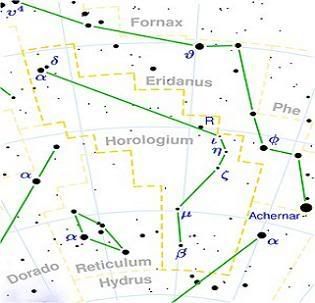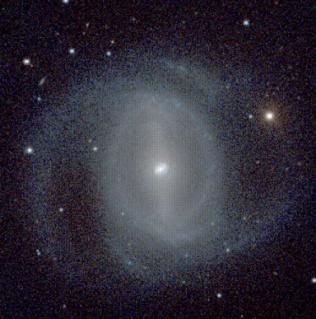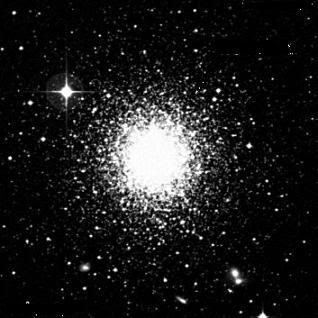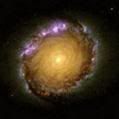Post by glactus on Feb 17, 2008 8:00:29 GMT

Horologium, Latin for clock, is one of the lesser southern constellations but it does have some interesting viewable objects. Originally named Horologium Oscillitorium by Abbé Nicolas Louis de Lacaille, the constellation name has since been shortened to be less cumbersome. Horologium Oscillitorium was to honour the inventor of the pendulum clock, Christian Huygens. Since it was invented in the 17th century and not visible in the Mediterranean, there is no earlier mythology associated with it.
Notable stars
The alpha star a' Horologii is a giant star with a magnitude of 3.85 and is 117 light years from Earth.
The delta star o' horologii is 175 light years a way and has a magnitude of 4.93
The beta star b' horologii is further out at 313 light years from Earth and has a magnitude of 4.98
The gamma star h' horologii is the dimmest with a magnitude of 5.3 and is 138 light years away.
Notable objects:

NGC 1512
THis Hubble Space Telescope image combines seven photographs in various wavelengths of light to reveal intense clusters of starbirth in a ring around galaxy NGC 1512. The clusters, it turns out, are either still mired in the clouds out of which they formed, or they have quickly cleaned things up and therefore shine brightly in visible light. NGC 1512 is 30 million light yeras a way and has a magnitude of

NGC 1433
The southern spiral NGC 1433 is the prototypical ringed barred galaxy: it has all three of the main ring types. Although being well studied, its dynamics have not been completely analysed. Magnitude is 11.1 and its distance from Earth is 60 million light years

NGC 1261
James Dunlop discovered this globular cluster on November 24, 1826 and cataloged it as Dunlop 337. Its luminosity and mass function is striking for a cluster as far away. (53.5 million light years.) Magnitude is 8.27

NGC 1512
credits:
image: Horologium map: wikipedia
en.wikipedia.org/wiki/Horologium
image: NGC 1512
www.spaceimages.com/ngc1512.html
image: NGC 1433
www.astr.ua.edu/gifimages/ngc1433.html
image: NGC 1216
astronomy.libsyn.com/index.php?post_category=Deep%20Sky%20Objects


